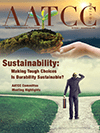
AATCC REVIEW
Scope & Guideline
Advancing textile science through innovation and collaboration.
Introduction
Aims and Scopes
- Textile Chemistry and Color Science:
The journal emphasizes advancements in textile chemistry, including dyeing processes, coloration techniques, and the science behind color application in textiles. - Sustainability and Environmental Impact:
There is a strong focus on sustainable practices within the textile industry, including the use of recycled materials, sustainable sourcing, and innovations aimed at reducing environmental footprints. - Functional and Performance Textiles:
The journal explores developments in functional textiles, such as those designed for specific purposes including sportswear, odor control, and water and oil repellency. - Industry Trends and Innovations:
AATCC REVIEW highlights emerging trends and technologies in the textile industry, including digital textile printing, artificial intelligence applications, and smart textiles. - Education and Professional Development:
The journal also serves as a resource for education within the textile field, reporting on industry events, committee updates, and professional development opportunities.
Trending and Emerging
- Sustainable Practices and PFAS Regulations:
With growing concerns over environmental sustainability, there is an emerging focus on PFAS regulations and their impact on the textile industry, highlighting the need for safer, more sustainable materials. - Smart and Functional Textiles:
The rise of smart textiles and wearable technology is a trending theme, as innovations in materials science lead to products with enhanced functionalities. - Circular Economy and Supply Chain Innovations:
Recent discussions around circular textiles and sustainable supply chains suggest an increasing awareness and commitment to recycling and waste reduction practices within the industry. - Artificial Intelligence and Big Data:
The integration of artificial intelligence and big data in textile production and design is emerging as a significant theme, reflecting the industry's shift towards data-driven decision-making and design processes. - Consumer Attitudes and Slow Fashion:
The journal is increasingly focusing on consumer attitudes towards sustainable fashion and the slow fashion movement, indicating a broader societal shift towards responsible consumption.
Declining or Waning
- Historical Perspectives:
Papers that delve into historical reflections of the textile industry have decreased, potentially reflecting a shift towards more contemporary issues and innovations rather than historical analysis. - Traditional Manufacturing Techniques:
There seems to be a waning interest in traditional textile manufacturing techniques as the industry increasingly embraces modern technologies and sustainable practices. - General Textile Production:
The focus on general textile production processes has become less prominent, with more emphasis shifting towards specialized and innovative applications of textiles.
Similar Journals

Clothing and Textiles Research Journal
Exploring the intersections of fashion, science, and innovation.Clothing and Textiles Research Journal is a prominent academic publication under the esteemed SAGE Publications Inc, focusing on the interdisciplinary fields of clothing, textiles, and their application within business, management, and materials science. With an ISSN of 0887-302X and E-ISSN 1940-2473, this journal has been a pivotal platform for research since its inception in 1982, continuing to serve a global audience up to 2024. It proudly holds a Q2 ranking in multiple categories, including Business, Management and Accounting (miscellaneous) and Materials Science (miscellaneous), emphasizing its significance in the academic community. The journal fosters innovation and knowledge sharing amongst researchers, professionals, and students by disseminating high-quality research articles that explore contemporary issues and advancements in textile technology and sustainable clothing practices. While it operates under a subscription model, the journal's influence is further enhanced by its strategic Scopus rankings, reinforcing its role as a vital resource for those seeking to advance their understanding in these dynamic fields.
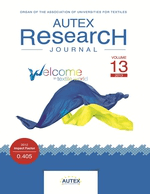
Autex Research Journal
Fostering interdisciplinary dialogue in manufacturing and materials science.Autex Research Journal is a distinguished *open access* academic journal published by WALTER DE GRUYTER GMBH, specializing in the interdisciplinary fields of Industrial and Manufacturing Engineering, Management of Technology and Innovation, and Materials Science. Since its inception in 1999, the journal has fostered scholarly communication by offering a platform for innovative research and advancements in textile technology and related disciplines. With an impact factor indicative of a solid academic reputation, the journal holds a prestigious Q3 quartile ranking in multiple categories, including Industrial and Manufacturing Engineering and Management of Technology and Innovation, positioning it as a noteworthy resource for both researchers and practitioners. The journal embraces a global perspective, featuring a broad scope of topics pertinent to textile science, innovation management, and material application in various industries. Its open access format since 2012 ensures that the latest research is freely available to a wide audience, reinforcing its commitment to the advancement of knowledge and technology in textiles. Researchers, professionals, and students alike will find the *Autex Research Journal* an invaluable resource for staying updated on developments within these dynamic fields.
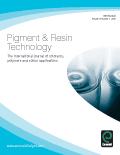
Pigment & Resin Technology
Pioneering Research in Advanced Materials and CoatingsPigment & Resin Technology is an esteemed journal published by Emerald Group Publishing Ltd, focusing on the interdisciplinary fields of materials chemistry and coatings science. With a history spanning from 1972 to 2024, the journal serves as a vital platform for disseminating innovative research and developments concerning pigments, resins, and related materials technologies. Holding a respectable position in the Q3 category for both Materials Chemistry and Surfaces, Coatings, and Films as of 2023, it ranks within the 40th percentile among its peers, underscoring its relevance and impact within these domains. Although it does not currently offer open access, the journal remains a key resource for researchers, professionals, and students aiming to stay abreast of cutting-edge findings and practical applications in materials science. As such, Pigment & Resin Technology is essential reading for those engaged in the innovation and application of advanced materials in various industries.
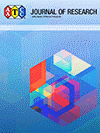
AATCC Journal of Research
Shaping tomorrow's materials with today's research.AATCC Journal of Research is an esteemed publication at the forefront of materials science, focusing on the latest advancements in the fields of materials chemistry, polymers and plastics, and process chemistry and technology. Published by SAGE Publications Inc. in the United States, the journal disseminates high-quality research that shapes the future of textile and materials innovation through rigorous peer-reviewed studies. With a notable impact factor indicative of its scholarly influence, AATCC Journal of Research stands out in the Q3 quartile rankings across its categories for 2023, making it a significant platform for emerging research and technological advancements. The journal's commitment to excellence is reflected in its extensive coverage from 2014 to 2024, and it is an essential resource for researchers, professionals, and students aiming to stay abreast of the latest trends and technologies in the materials science domain. While it operates under a traditional access model, the potential for pioneering knowledge exchange remains paramount, further solidifying its role in the academic and professional communities.

Macedonian Journal of Chemistry and Chemical engineering
Pioneering Discoveries in Chemistry and EngineeringMacedonian Journal of Chemistry and Chemical Engineering, published by the SOC CHEMISTS TECHNOLOGISTS MACEDONIA, is a premier Open Access journal established in 2008, with a focus on disseminating innovative research in the fields of Chemistry and Chemical Engineering. With its ISSN 1857-5552 and E-ISSN 1857-5625, the journal has rapidly gained recognition, achieving a Q3 category rank in both Chemical Engineering and Chemistry for 2023, reflecting its contribution to academic debate and practical advancements within these disciplines. The journal is dedicated to fostering an accessible platform for researchers, practitioners, and students, allowing them to share their findings and insights with a global audience. Situated in Skopje, Macedonia, the journal welcomes submissions that explore a wide array of topics, including but not limited to, theoretical models, experimental studies, and technological innovations. Since transitioning to an Open Access model in 2014, the journal has enhanced its reach and impact, providing unrestricted access to all published articles, thereby encouraging collaboration and knowledge sharing across the scientific community.

Advanced Fiber Materials
Exploring Innovative Horizons in Material ResearchAdvanced Fiber Materials, published by SpringerNature, stands at the forefront of research in the realms of materials science, polymers, and optical and magnetic materials. With an ambitious scope that spans from 2019 to 2024, this journal is dedicated to disseminating cutting-edge findings and innovative applications in the field of advanced fibrous materials. It enjoys a prestigious status, classified in the Q1 quartile across several categories, including Electronic, Optical and Magnetic Materials and Materials Chemistry, showcasing its influence and relevance within the academic community. The journal's impressive rankings in Scopus highlight its significant contributions to the disciplines of Polymers and Plastics, as well as various aspects of Materials Science, consistently placing it among the top-tier publications in these fields. By encouraging open discourse among researchers, professionals, and students, Advanced Fiber Materials plays a crucial role in advancing knowledge and fostering innovation in material design and application.
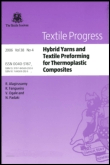
TEXTILE PROGRESS
Empowering Progress in Textile Engineering and ManufacturingTEXTILE PROGRESS is a premier academic journal published by Taylor & Francis Ltd, dedicated to advancing the field of textiles and materials science. With an ISSN of 0040-5167 and an E-ISSN of 1754-2278, this journal serves as a vital resource for researchers and professionals interested in the interplay between chemical engineering, industrial processes, and manufacturing technologies related to textiles. Covering a wide scope of topics from 1969 to 2024, TEXTILE PROGRESS has established its reputation within the scholarly community, consistently achieving a Q2 ranking in various categories including Chemical Engineering, Industrial and Manufacturing Engineering, and Materials Science as of 2023. Its impressive Scopus rankings – 121st in Industrial and Manufacturing Engineering and 101st in General Chemical Engineering – reflect its significance and relevancy in the academic landscape. While not an open-access journal, TEXTILE PROGRESS ensures accessibility through its extensive distribution channels, enabling students, researchers, and professionals alike to benefit from cutting-edge research and developments in textile technology and science.
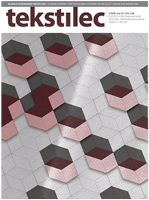
Tekstilec
Fostering innovation at the intersection of textiles and technology.Tekstilec, an esteemed journal published by University of Ljubljana, Slovenia, has been a prominent platform in the fields of textiles, engineering, and industrial management since its establishment in 1989. With an Open Access model since 2000, the journal ensures that scholarly research is accessible to a global audience, fostering the dissemination of knowledge across various disciplines. While its impact factor remains unlisted, Tekstilec holds respectable rankings within its categorized quartiles, featuring a 2023 Q4 ranking in Business and International Management and Q3 rankings in multiple engineering and material science categories. This positions the journal as a vital resource for researchers, professionals, and students seeking insights into textiles and their multidisciplinary applications. With a commitment to advancing knowledge in its scope, Tekstilec invites contributions that explore innovative research and practical developments, encouraging collaboration within the global academic community.
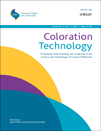
COLORATION TECHNOLOGY
Illuminating the Path of Color ChemistryCOLORATION TECHNOLOGY is a distinguished academic journal published by Wiley, focusing on the interdisciplinary fields of chemical engineering, chemistry, and materials science. With an ISSN of 1472-3581 and an E-ISSN of 1478-4408, this journal serves as a vital platform for sharing innovative research and developments in coloration processes, colorants, and related technologies. Among its impressive credentials, COLORATION TECHNOLOGY has achieved a 2023 Scopus ranking of Q3 in its respective categories, reflecting its standing among peers in the scientific community. The journal’s inclusion in both the Q3 quartile of Chemical Engineering and Chemistry indicates its commitment to contributing to these fields through high-quality, peer-reviewed articles. Researchers, professionals, and students will find open access options available, accommodating a wider readership and facilitating knowledge sharing. Join the community of color science innovators and explore the advancements through COLORATION TECHNOLOGY, a key resource for both foundational and pioneering studies in coloration technologies.

INDIAN JOURNAL OF FIBRE & TEXTILE RESEARCH
Advancing textile innovation for a sustainable future.INDIAN JOURNAL OF FIBRE & TEXTILE RESEARCH (ISSN: 0971-0426, E-ISSN: 0975-1025) is a leading platform dedicated to advancing the field of textile research and innovation. Published by the NATIONAL INSTITUTE OF SCIENCE COMMUNICATION-NISCAIR in India, this open access journal has been fostering knowledge sharing since its establishment in 2006. With a broad scope encompassing Chemical Engineering, Environmental Science, and Materials Science, the journal's convergence from 1990 to 2024 highlights its commitment to ongoing academic dialogue. Currently categorized as Q3 in several disciplines, including Chemical Engineering and Environmental Science, it provides critical insights into contemporary challenges and developments. The journal's Scopus rankings further illustrate its influence within the research community, making it an essential resource for researchers, professionals, and students interested in textile technology and its intersections with sustainable practices. By fostering a collaborative environment for sharing pioneering research, the INDIAN JOURNAL OF FIBRE & TEXTILE RESEARCH stands as a vital conduit for scholarly communication in the textile sector.